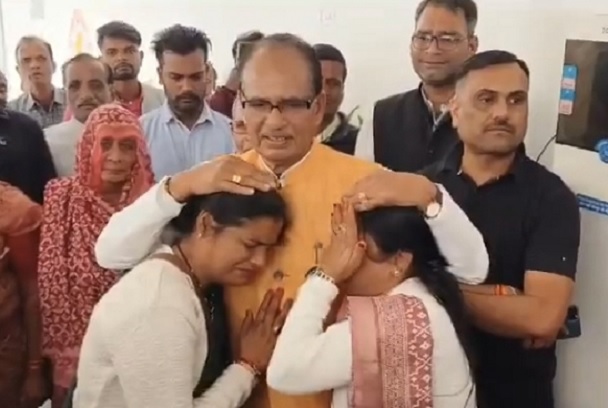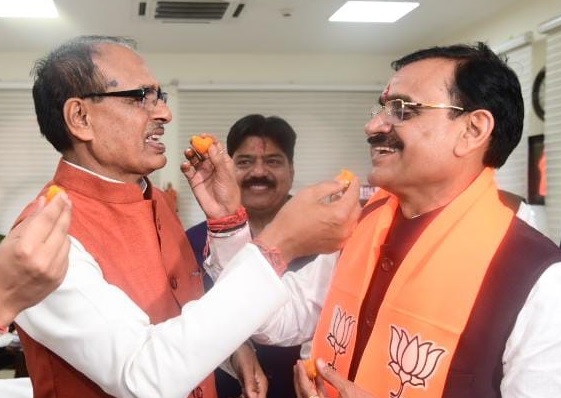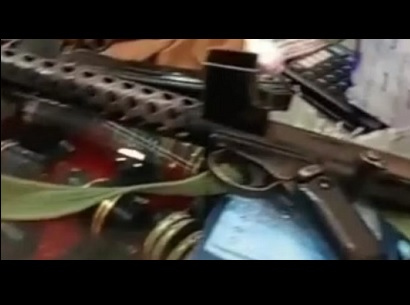Bhagoriya fest at Mandu: Roopmati-Baz Bahadur’s town erupts in dance, music and colours
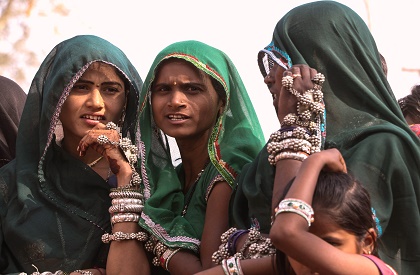
Loveleen Gulati
NewsBits.in
Mandu or Mandavgarh – the seat of the romantic musical story of Rani Roopmati and Baz Bahadur - seems to have different colours in and around holi.
Dhols (drums that are called Maandal locally) song, dance and colours were seen at Mandu Jami Masjid crossing in the Dhar district of Madhya Pradesh on Friday as it was time for the popular Bhagoriya haat.
Bhagoriya – a tribal festival associated with harvesting as also with matchmaking - is marked approximately ten days before Holi, in parts of Dhar, Jhabua, Alirajpur in Malwa region of Madhya Pradesh.
The festival is normally celebrated after harvesting, but though harvesting is still going on in many parts of the region, Bhagoriya fest is on in full splendour. Bhagoriya is held in different areas on the local weekly haat (market) days.
On Friday, March 10, the venue was at the Jami Masjid crossing of Mandu and at around 2.00pm it was brimming with people, waiting with excitement, to witness groups as they come with their maandals, rhythmic beats filling the air with festivity.
Hundreds were sitting on stairs of the historic Jami Masjid, while many on Mandu’s Victory tower, while others were dancing with the tribal groups or enjoying sugar cane juice, or buying Mandu’s ‘mel’ and ‘naulkaha haar’ (typical garlands of sugar chunks sold in the haat around festivity)
Some political hue was provided by hoardings and flags of two parties all over the place. Tents were set up by local leaders and their groups, to shower flowers on the dancing troupes as they passed by.
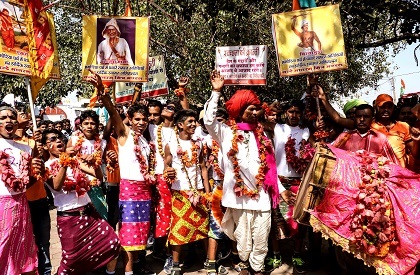
Interesting one to watch was Vande Matram Seva Mandal dressed up in sleeve less white T-shirts, with garland of bright palash flowers around their necks, tri colour painted on their cheeks.
They had ‘tie and die’ cloth wrap around their waist like a dhoti, and few were wearing sun shades too, providing a modern touch to their attire.
They slowly danced to the beats of drum, calling out Vande Matram and ‘burrah’ sounds.
Similraly in Dhar’s Amjhora, Bhagoriya was celebrated on March 10, in which 37 Dhol (drummers) from 30 villages participated.
In Jhabua and Alirajpur, Bhagoriya is more famous for elopement of young couples wishing to marry, though with times things have changed as now young ones decide their own terms for marriage.
The interesting custom was that boy used to apply gulal (colour) to girl of his choice and if the girl liked the boy too she will not remove the colour which meant they could elope and marry. But if she removed the colour it meant she was not interested and would be left alone.
Though things have changed with times, but we did see many young boys throwing gulaal at girls, which is most case was instantly removed by them.
Vibrancy of red, green, blue, black, purple colours, and women’s hands beautifully covered with silver coloured jewellery was wonder to the eyes.
The rhythm of dhols, the colour and scent of gullal and mud in air with people dancing to the rhythm and getting diffused in colour and music that makes Bhagoriya what it is. But not without without enjoying taadi - locally made and brewed liquor sold on the road sides.
(Loveleen Gulati is Bhopal based travel and food writer. She writes for Newsbits.in. She tweets from @dilsepostnews).





